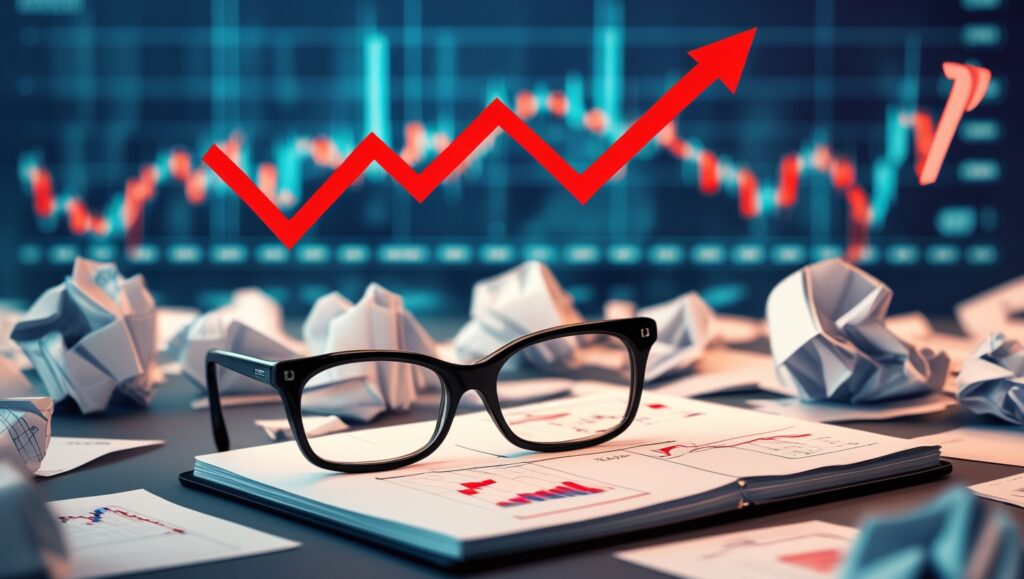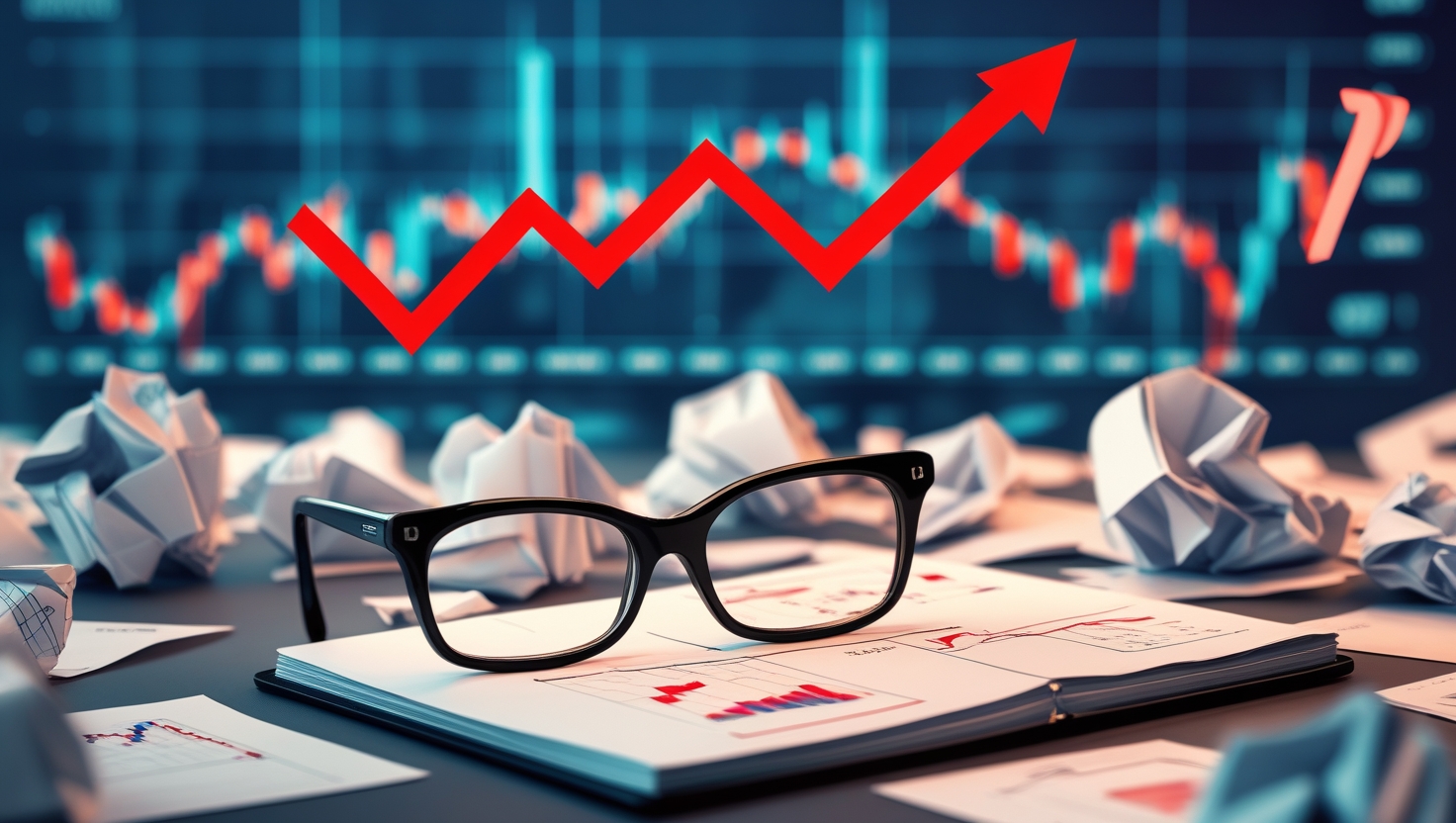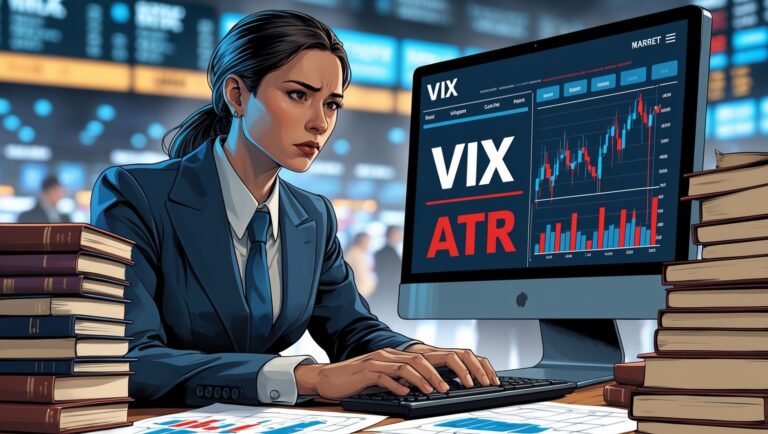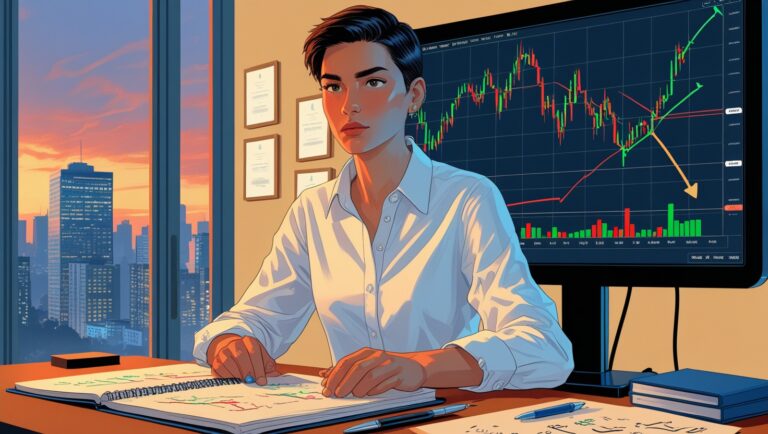Why Most Beginner Trading Advice Is Wrong (And What I Do Instead)
Why Most Beginner Trading Advice Is Wrong (And What I Do Instead)
When I first started trading, I followed all the typical beginner advice: use tons of indicators, watch 50+ stocks, try to trade everything that moves, and stay glued to the screen all day.
Guess what? None of that helped me actually make money.
Most beginner trading advice is recycled noise — it sounds helpful, but in practice, it overwhelms you. I used to think more tools meant more success, but I was just complicating everything and sabotaging my own progress.
Once I stopped listening to random YouTubers and Reddit threads, I started building a system around what actually worked for me — not what everyone else claimed I should do.

Table of Contents
The Problem With Most Beginner Trading Advice
A lot of trading advice you’ll find online is either outdated or meant to impress, not to teach. People throw out terms like RSI, MACD, Fibonacci levels, Level 2, VWAP, and more — and while those can have value, they’re not essential for beginners.
The truth is, if you’re just starting with a small account, simplicity wins. I had to learn that the hard way after blowing up trades from over-analysis and relying too much on noisy indicators.
I’ve even seen people promote strategies they don’t use themselves — just content meant to go viral but doesn’t help you become consistent. I fell into that trap early on and wasted months chasing fake setups.
What I Do Instead (And Why It Works)
Now, I stick to a minimal setup. I only watch 5–6 stocks max per day. I read the market without indicators and focus on clean price action. I plan my trades before the market opens and I don’t trade unless my setup is there — period.
This shift in mindset was the reason I finally became consistent and started paying my bills from trading. I’m not a millionaire. I’m someone who uses trading to create real income — and that’s what I teach in my ebook here.
I built my entire process around clarity, simplicity, and discipline — not noise. I show how to spot stocks that are likely to move, how to build a watchlist that works, and how to know when not to trade. These are things that no one told me when I started.
What New Traders Actually Need
If I had to go back and give myself advice, I’d say this:
- Focus on one setup and get great at it
- Use price action, not 10 indicators
- Trade only when you see your edge
- Keep your screen and routine simple
- Don’t try to trade everything — trade smart, not more
This approach is what I cover in detail inside my ebook. I wrote it for traders like me — those who aren’t trying to be flashy, just trying to win consistently and get real results.
Final Thoughts
The biggest breakthrough I had was realizing that most beginner trading advice is just noise. I started winning when I threw it all out and started building a system that was simple, reliable, and fit my lifestyle and my account size.
If you’re tired of information overload and want a straight path to consistent trades, check out my ebook here.
It’s exactly what I wish someone had given me when I was starting.
Another piece of advice I hear all the time is to “practice on a simulator for months before using real money.” While paper trading has its place, I noticed that once real money was on the line, my emotions were completely different. What I really needed was a small account, a defined risk, and a strategy I trusted — not months of simulation with no pressure.
People also tell you to “buy low, sell high,” but they never explain how to define low or high in a fast-moving market. That kind of vague advice kept me guessing for months. What worked for me instead was spotting clear breakouts or strong momentum with price confirmation, not gut feelings.
Many beginner traders are told to watch YouTube all day. I did that too. But most of those videos just confuse you with flashy wins and complex setups. It wasn’t until I unplugged from the noise and started creating a repeatable routine that I saw results.
One thing I teach in my ebook is how to structure your day — especially what to do before 9:30AM. That window of time is when I prep my watchlist, review charts, and mentally get ready. That’s a key part no one ever mentioned when I started.
I also used to think I had to trade every single day to grow my account. Now I know that the opposite is true. I only trade a few days a week, and those are the days where the market aligns with my setup. Less is more when your strategy is precise.
Another common myth? That more indicators mean better confirmation. Nope. More indicators usually mean more confusion and conflicting signals. When I stripped everything away and focused on raw price movement, everything became clearer.
I stopped wasting time on earnings calendars, newsletters, and forums. They rarely helped me find clean setups. Now, I stick to a few key tools — and more importantly, I stick to my checklist, which I outline in my ebook.
I remember when I’d jump into a trade just because someone on Twitter posted a chart. That never worked out for me. I had to develop the confidence to trust my own analysis, and that only came from refining a simple method — not copying trades.
A big turning point was when I realized that my trading success had nothing to do with fancy software or paid indicators. I trade using free tools and a clear system that works. I talk about those tools in my blog and show how I use them daily.
So many beginner strategies focus on “chasing” — chasing breakouts, chasing alerts, chasing volume. What I do instead is prepare in advance. I wait. I watch. Then when my setup appears, I act. That change in pace helped me avoid emotional decisions.
One of the best things I ever did was journal my trades. Not just wins, but also the bad ones. That habit taught me more than any online course ever did. I started seeing patterns — both in the charts and in my own behavior.
Most importantly, I had to stop searching for the “perfect system” and start building one that fits me. My routine, my lifestyle, my account size. That’s what made all the difference — and it’s exactly why I wrote my ebook in the first place.

Stay ahead in the stock market! Subscribe to our newsletter and receive exclusive stock flow reports, trading insights, and actionable tips directly in your inbox. Join thousands of traders who get our updates first.







